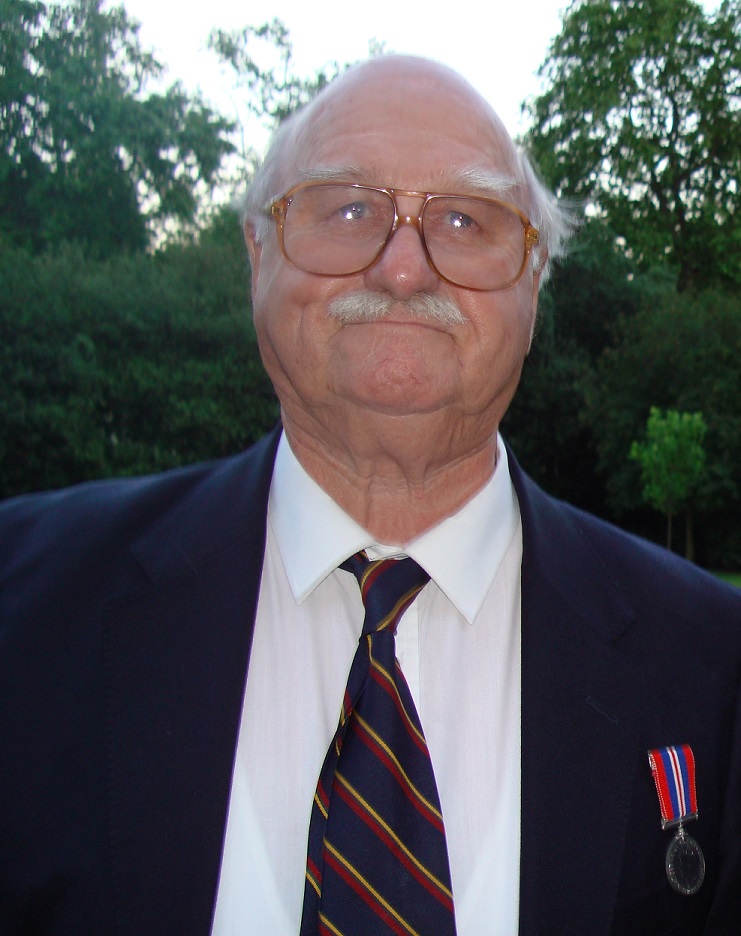A Homage to…
Colour Sergeant Peter G Young – PO/x5488

Who joined the Corps on 1st May 1944 as a Boy Bugler, and was drafted to HMS Queen Elizabeth on completion of training. Unfortunately he caused a major disturbance in the ships routine by sounding off “Up Spirits” when it should have been “Liberty Men.” Hauled before the Captain’s Table, he was dismissed the ship forthwith. (You can’t mess about with the ‘Grog.’)
He trained with 460 Squad at Deal and Infantry Training Centre, Lympstone, and then specialized as a Mechanical Draughtsman at the Royal Engineers School, Chatham. On completion, he returned to the Corps at Fort Cumberland Drawing Office, and continued his education at Portsmouth Technical College, while designing and constructing the Corps first recruiting float, which did sterling service for many years.
Drafted to I T C , he assembled a staff of civilian and service people producing Training Aids, and crucially, the posters and charts required to sell the Commando Ship Concept to a skeptical Admiralty and Ministry of Defence. ITC Tattoos required the construction of two hundred foot long replicas of the Walls of Peking mounted on the roof of the Drill Shed, where the Boxer Rebellion was re-enacted on the parade below.
Another ITC project in which he took pride was the designing and building of a suspension bridge over the River Tone, near Taunton.
While all this was going on, he and his wife Jose had purchased a house at Porkellis, Cornwall, where they hoped to set up a Craft Workshop manufacturing tourist souvenirs he would design. Jose took in boarders at the house, while Peter bought a mini- bus to taxi recruits to Porkellis during their weekends off, where they worked on the house and gardens, and shaped a hole for the septic tank after the Assault Engineers had blasted out a “start.”
This in return for food, scrumpy in the evenings, and a bed. Now nearing the end if his engagement, he had never had a foreign draft, never done the commando course, and continued to wear his blue beret around ITC until his Commanding Officer called “For goodness sake Colour Sergeant Young, get a green beret.”
Upon leaving the Corps, Peter became a Training Adviser with the Printing industry Training Board, where he incidentally learned about Company Planning, Budgets, and Financial Control, knowledge that would be invaluable as their business took off. They purchased the blacksmith’s forge with three and a half acres at Wendron, and began a collection of antique machinery from the tin mine ruins in the area, setting them up as static exhibits. A shunting engine from the days of steam, and a giant horizontal beam engine from the 1700’swere brought in, radio controlled boats, slot machines, video games ,a restaurant featuring a turning water wheel among the diners, and other tourist attractions began to bring in crowds of holiday makers to what was now “Wendron Forge.”
The big attraction came by accident, when the ground in an adjacent field collapsed, and they realized that Wheal Roots Mine, now flooded, could be accessed by tunneling, and the shafts and levels made safe for public viewing. Thousands of gallons of water had to be pumped out on a continuous basis. Lighting , stairs and handrails were installed, leading to conducted tours by people delighted to wear “hard hats” to view manikins operating drills in the dangerous conditions of long ago. Wendron Forge became “Poldark,” (by permission,) and “Ha’penny Park,” as times changed,
The Young’s had become successful entrepreneurs, and employers of up to 110 people. Pete served as Chairman of the Cornish Federation of Chambers of Commerce, and of The Cornish Association of Tourist Attractions.
The wheel had turned full circle, and the disgraced Boy Bugler had now become “Captain of his own ship,” and able to retire comfortably to Spain with Jose where they spent many happy years of well earned relaxation. Poldark Mine has changed hands several times since the Young’s left, and is now currently open as a Cornish Mining World Heritage Site.
Peter came through several serious health issues, but finally succumbed to dementia on 1st of July 2014. He is survived by his loving wife Jose and two daughters, Carol and Lyndsay.







